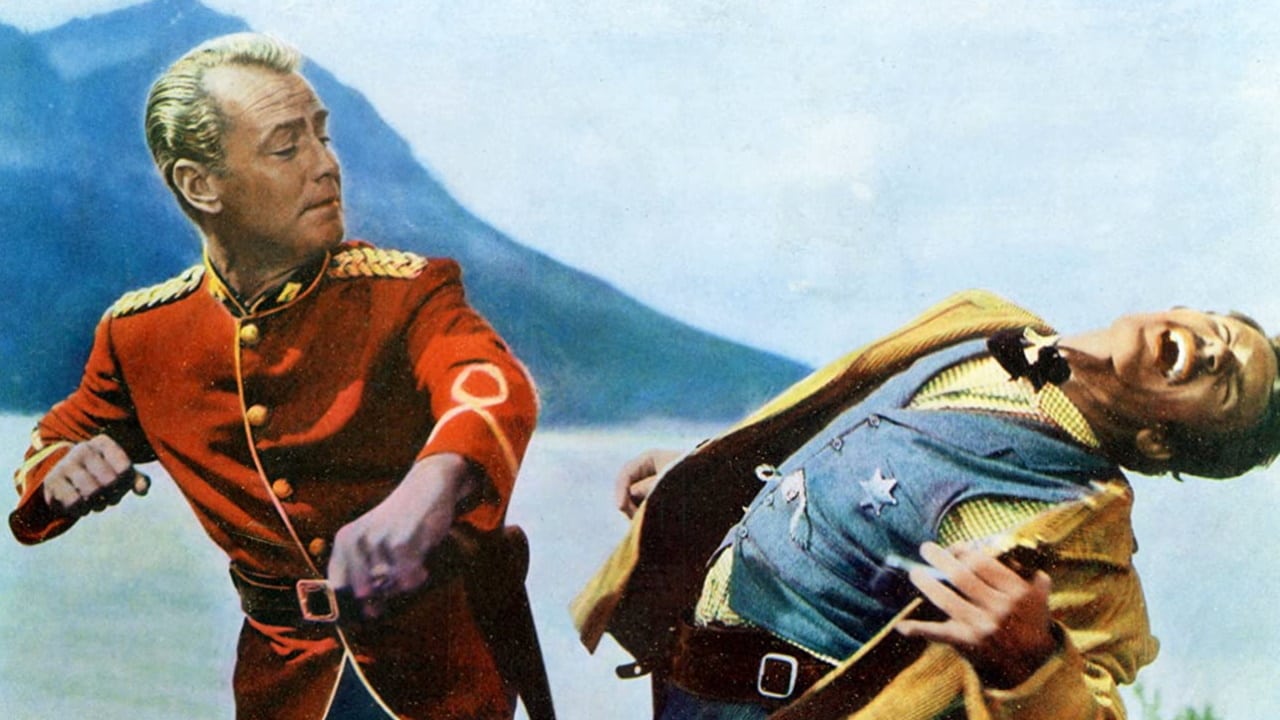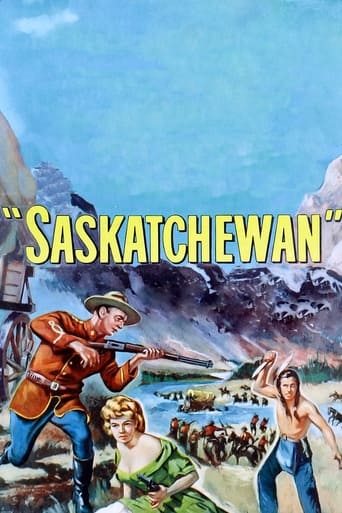

Saskatchewan is directed by Raoul Walsh and written by Gil Doud. It stars Alan Ladd, Shelley Winters, J. Carrol Naish, Hugh O'Brian, Jay Silverheels, George Lewis and Robert Douglas. Music is by Joseph Gershenson and cinematography in Technicolor is by John F. Seitz.Saskatchewan River Country, Spring 1877, and Mountie Sergeant O'Rourke (Ladd), who was reared by the Cree Indians, sets about trying to prevent the Cree from joining forces with the Sioux who have crossed the border into Canada after massacring General Custer at Little Bighorn.Competent story with muscular direction for the action sequences, Saskatchewan is undoubtedly reliant on the beautiful visuals to keep the viewer enthralled. Plot is one of those that telegraphs the outcome right from the off, thus any genuine suspense is hard to garner, while the characterisations are drawn as standard. Male cast members are mostly fine, with Ladd always watchable when doing stoicism, but Winters, in a character desperately trying not to be a token, is sadly miscast. However, the action is of high standard, with lots of extras and horses whizzing about to create excitement, and the photography in and around Banff National Park in Alberta is sublime. Whether it's the wonderful mountains, the angled trees or the shimmering river (the latter providing a truly breath taking reflection at one point), Seitz's (The Lost Weekend/Sunset Boulevard) work for this film is reason enough to seek it out. 6/10The Pegasus Region 2 DVD release is presented in 4:3 full frame and the picture quality is good to fair, if a little grainy for the very light scenes.
... View MoreThe score is based on the French old folk song "A La Claire Fontaine " (17th century )whose writer remains unknown to this day.It crossed the Atlantic and became popular in Quebec ,notably among the Coureurs De Bois ;so its use in this northern western makes sense.There are two plots :one concerns the fight against the Sioux ,with a little help from the Crees -one of the Cree Indians considers O'Rourke (Ladd),the hero ,not his friend but his brother;the other deals with a marshal (O'Brian) who's got to bring back a woman (Winters)(who might or might not have killed a man).And that the man in question was the policeman's brother only makes matters worse.There are good leads (Shelley Winters was an actress who could play anything and she is ideally cast as this tough woman),splendid landscapes (the scene of the rainbow or the misty banks of the lake ) ,a bit of humor (the squaw and her children ,and the final nod to France)and some emotion (the wounded soldier).It is no one of Walsh's most memorable works ,but it's quite pleasant.
... View MoreO'Rourke is a red coat no, not Butlins but a member of the Canadian Mounted Forces; and he is returning to service having travelled with his Cree Indian half brother Cajou. When he reaches his posting, his commander Benton immediately distrusts Cajou, driving a divide between the half brothers that see them separate. Escorting the beautiful survivor of a Sioux attack (Grace Markey) across the territory, the Mounties are fearful of the Sioux, even though O'Rourke can see their side of things a viewpoint that makes him the target of suspicion and mistrust from Benton, Smith and others in the party.The strange name attracted me to it, a statement that perhaps shows just how ignorant a person I really am! The cast also suggested that this would be a solid and enjoyable b-movie western that would meet my needs. The film actually did more than that and I found it to be an enjoyable if slightly apologetic b-movie that provided solid characters, a good plot and some exciting (if dated) action scenes. Of course it isn't anything that wonderful and those who dislike the genre would do well to avoid it for obvious reasons. The plot starts well, with some interesting character issues but then does little with them and heads into the usual b-movie territory, forgetting the more interest conflict between O'Rourke and Cajou that appeared to be the focus early on. That said it does well enough for the genre and provided enough entertainment for my needs.Cinematography wise it looks good; despite the claim that it was all filmed in Saskatchewan the presence of rolling hills and impressive mountains suggest that perhaps this was not the case. Despite this it looks good, not John Ford but the bright colours and location feel that the better b-movies could muster. Ladd is enjoyably wide-chested in a typically heroic role and will please genre fans. Winters is a good female co-star, pretty enough to fill that role but feisty enough to avoid blandness. Silverheels has a smaller role than I would have liked and people like Long, Douglas and Naish all fill their roles well enough despite not doing anything in particular of merit.Overall this is a solid b-movie western that does all that you expect it to and, if that is what you want, you'll enjoy it like I did. It could have done more of course but it works for what it is and the colourful presentation and solid pace help cover what "could have been" with what is.
... View MoreSitting Bull and Crazy Horse vacationed in Banff. There are snow capped mountains surrounding Fort Walsh in SW Saskatchewan. The Mounties had a gun battle with the Sioux, leaving many dead on both sides. You can travel by canoe from the Rockies to Fort Walsh in a day (quite a feat considering it's hundreds of miles, and there's no river).It's all good. Indian scouts making jungle calls to each other at night. Mighty Alan Ladd slaying men left and right, winning the heart of the beautiful woman, and never having to raise his voice or change it from a flat, dull monotone. That's the kind of men the Mounties were made of.Best of all, Shelley Winters in a low cut dress, six gun in hand explaining "I was on my way to Battleford!"10/10
... View More